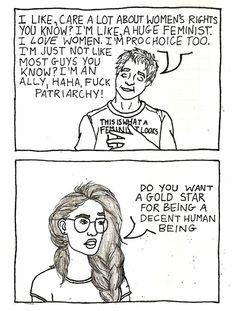
"That you are a lady,
a warrior,
a tsunami,
and you belong only to yourself.”
Zaeema J. Hussain, The Sky Is Purple
I am extraordinarily and exceedingly tired of the relational equation that women are constantly made a part of. It is as if their singular identity is of a mother, a daughter, a wife and beyond these they cease to exist.
Men and women are more than the sum of their relationships. They are more than the burden of the relationships they are confined by society. When we accord respect primarily to the mother, daughter, sister, and wife and not to the person playing all these roles, we reduce a woman to the mere role she plays. Her personhood becomes secondary to the socially accepted tapestry that she is a part of. A woman’s chief identity is relational rather than individual.
When a society honours all the “hoods” that a woman is (Motherhood, sisterhood, wifehood), it sends a message that a woman is nothing if she is bereft of these titles. Such a notion inevitably perpetuates patriarchy where a woman’s identity is caged in titles directly (or indirectly) associated with men. Such a premise is dangerous territory. It expects women to give up their dreams, aspirations and personhood for the relationship. This view of women being nothing more than their relationship encourages a culture that is based on tokenism. A culture that respects a woman only if she fulfils her role in these relationships. Beyond and outside these relationships she is a “persona non-grata”.
All these titles are so intrinsically tied up in the definition of womanhood that a woman who dares to break the confines of these relationships is ex-communicated by her immediate surroundings. Such a woman is promptly declared as not being “true” to the spirit of womanhood. A woman is supposed to derive gratification and a sense of self-worth from her parents, children, siblings and husband. If a woman is happy it is because her father, brother and children are happy. She has no right to be happy if her happiness is independent of these relationships.
This perspective perpetuates the myth that patriarchy has been so successful in preserving Ie :woman is valued and loved by society because she is valued and loved by a man. This argument is extensively used when it comes to “saving women”. Sexual assault, rape or any other kind of plethora of gender based violence acts when committed against a woman face this argument. The plea of viewing the rape survivor as a sister, daughter etc. is often given as a panacea for either rape prevention (The famous “now in jail for sexual abuse of a minor girl” self proclaimed guru Asaram’s weapon to prevent rape was to call the rapist your brother and viola he’ll have a sudden heart change) or as an apology from the rapist. Rape is not okay. Period. It is not okay because it is a gross violation of an individual’s personal autonomy and not because the rape survivor is a mother, daughter or sister to someone. What if she is not a mother or a sister? Will rape be justified in such circumstances?
Each of us regardless of our genders enter into multitudes of relationships some of which are given to us and some we choose; some are lifelong and some with a finite self life. However to tie a person’s identity to a certain relational structure, is a gross injustice to the individual that person is. Such a uni- dimensional perceptive leads to women being devoid of autonomy and independence of identification.
Motherhood and sisterhood (fatherhood and brotherhood too) are only a tiny part of a person's being. If we can't respect someone because they are humans, we can't respect them through the relationship lens. A world where a woman is but a relation is fast moving towards its downfall. Treating women solely as an attachment to her various male relatives is also evident in the way in which various abuses are female centric. These abuses operate on a reductionist premise which views a woman as a symbol of the immaculate manhood that is the pride and joy of a male centric social structure. The grand canyon of ignorance that has existed for centuries within each of us make us sees a woman as a mere appendage to the man she is related to. The highest abuse that you can hurl at an Indian male is about his sister and mother. They are not abuses meant to insult women but to insult the man and his inability to protect his female subjects. What kind of a world are we living in where a woman is treated as an object of insult and ridiculed only so that men can be provoked?
This phrase is such a favoured one that it is used like candy to placate a truculent child. Even President Obama could not remain untouched by this line of argument. In his State of the Union address in 2013 he stated that:
“We know our economy is stronger when our wives, mothers, and daughters can live their lives free from discrimination in the workplace, and free from the fear of domestic violence.”
The above sentences reeks of the “let’s protect our mothers and daughters” syndrome. This rhetoric diminishes women to possession. She has to be associated to a man, any man to be significant in the scheme of things.
When we enchain a woman’s identity to the myriad of characters she plays we link her existence to those of other relationships; someone who always needs the crutch of a relationship to survive in this world. A woman, for eyes that see her with this crutch, is nothing but a creature that needs to be protected. A helpless, defenceless person who needs these relational reference points in her life forever in order to be feel protected and loved.
Until a mother is regarded as an individual first ; until a sister is not tied up to her brother for being happy and until a daughter is more than the product of her birth givers , I’m a relationship second and a human first.










Add new comment